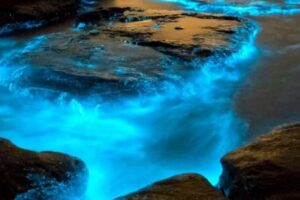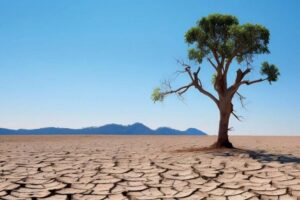Understanding how life as we know it came to exist, is something that scientists and researchers have long been examining by looking at the geological evidence we have left on Earth. A key place to discover such evidence is at meteorite landing sites, as often these give us big clues on how the earth looked upon impact and what the world looked like following the event. A key focus for this research currently is looking at the S2 Meteorite that impacted Earth more than 3 billion years ago. The meteorite is thought to have brought widespread destruction, whilst also triggering the start of new life in its wake.
The S2 Meteorite impacted the Eastern Barberton Greenbelt region, which is home to some of the oldest exposed rock on Earth. The belt is located on the eastern edge of South Africa, where there has long been rich gold mineralisation and is home to a usual type of ultramafic volcanic rock called komatiites. Since the discovery of the impact site, researchers have been travelling to South Africa to obtain and analyse spherule particles or tiny rocks which were left behind by the impact. By analysing these fragments, the researchers can begin to gather a better picture of what the S2 Meteorite was like, and how the Earth looked at the time.
The S2 Meteorite is an interesting discovery as it is thought to have been 200 times the size of the asteroid that took out the dinosaurs, which shaped the way the earth as we know it now looks. Therefore, studying the fragments from S2 is vital to understanding the earth, which when it hit was in its infancy stage covered with vast amounts of water, with very few continents, and only single-celled microorganisms.
From research conducted at the site, scientists have discovered that the impact would have caused a massive tsunami which would have churned up the ocean floor with debris, causing this to flush through coastal regions. The heat from the impact boiled the top layers of the ocean off and contributed to the heating of the Earth’s atmosphere. Additionally, the plume of dust caused by the impact would have sent a thick layer of dust into the atmosphere blocking out the sun. All of these aspects contributed to many of the single-celled organisms which relied on the sun for photosynthesis to die due to the thick dust layer, effectively killing any of the organisms on earth at the time.
However, the S2 Meteorite didn’t just bring destruction, following the tsunami churning up the ocean, bacteria and archaea would have been pushed into coastal regions. These organisms would have thrived on the influx of iron from the deep-sea floor, as well as on the increased phosphorus levels caused by the meteorite and the coastal erosion of the tsunami. These factors allowed the bacteria and archaea to thrive, and so began significant population blooms across the land following the impact. Therefore, whilst the S2 Meteorite is thought to have brought destruction, even more significant than the one that killed the dinosaurs, it also led the way to the development of new organisms on Earth.
Overall, researchers continue to investigate the Barberton Greenstone Belt, as the S2 Meteorite discovery is just one of 8 recently found in the region, and so it continues to provide a great landscape for research into the early days of Earth.
Sources:
https://www.bbc.co.uk/news/articles/c4g4g455p8lo
https://en.wikipedia.org/wiki/Barberton_Greenstone_Belt#:~:text=%5B2%5D-,Impact%20event,-%5Bedit%5D







